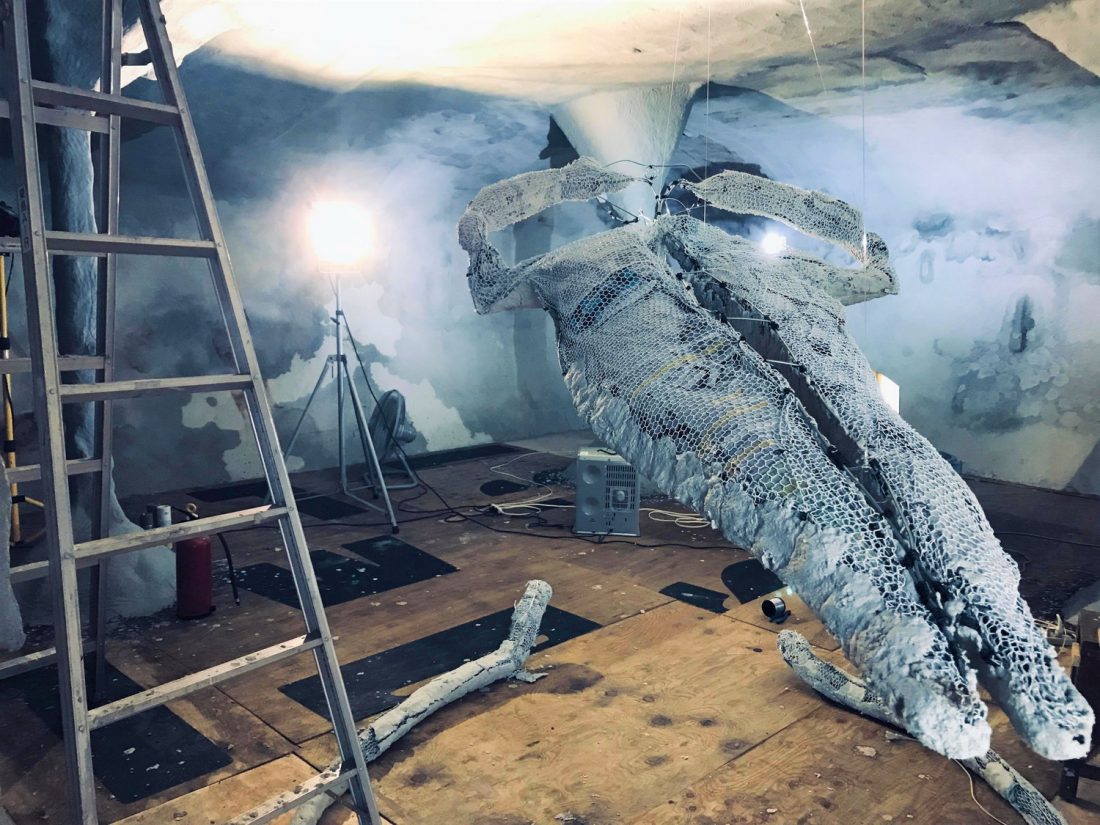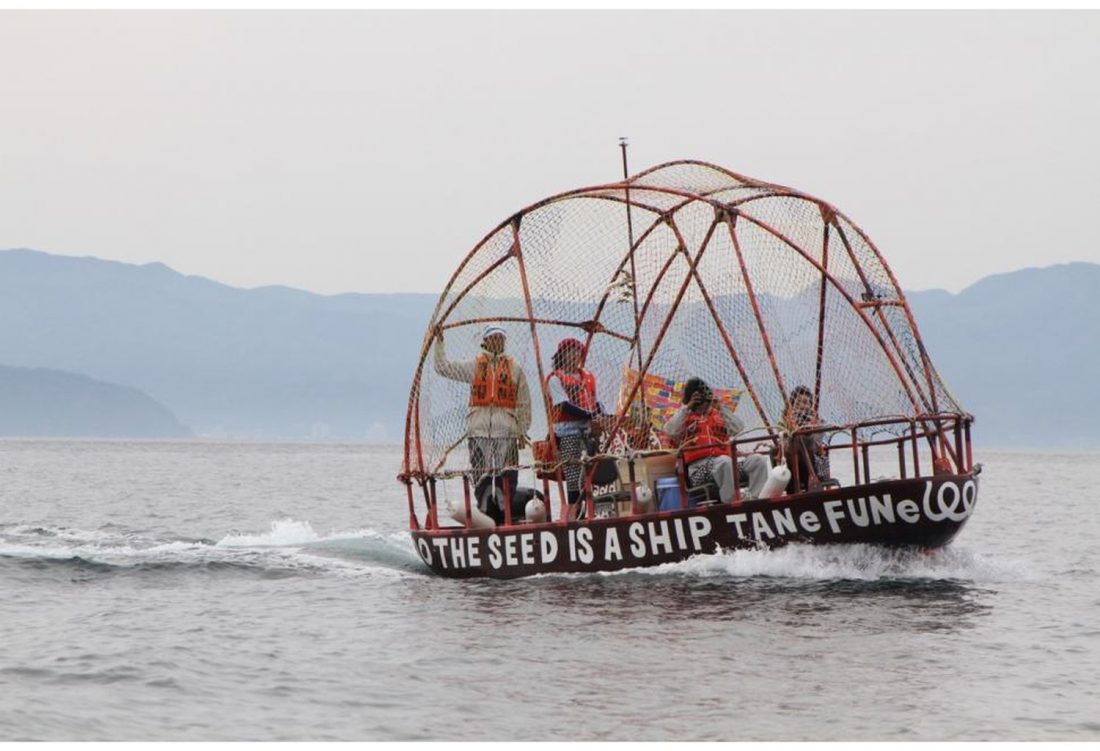Setouchi Triennale 2019 on Awashima Island: The Art!
This Fall, the Setouchi Triennale will bring a variety of art and culture to the small island of Awashima. Keep reading to find out what kinds of artworks and experiences you can expect to find this Fall!
* For more information about individual artworks, visit the official 2019 Setouchi Triennale website.
1. Works Exploring the Origin of Life and Humanity

The Artist in Residence Program’s works in progress, Soup of Life and Grotto of Beginning
Since 2010, the city of Mitoyo has, with the support of Katsuhiko Hibino, implemented an Artist in residence program. Young artists from Japan and abroad are invited to reside on Awashima Island for a few months at a time to while working on their pieces.
This year, two artists are currently in residence on Awashima Island. Maki Okojima is a youthful and spirited artist who has had works displayed in Tokyo and France. Additionally, there is Mayur Vayeda, who specializes in Warli painting from his native india.
During their 4-month tenure as artists-in-residence, they have been working with the residents of the island to make two pieces, Soup of life and Grotto of Beginning, respectively.
In this piece, a whale representing the connection between all life swims within a cavern. The artwork brings visitors back to the very origin of humanity. What were the artists’ intentions in creating such a piece? Read their interviews to find out!
▼An interview with Maki Okojima
▼An interview with Mayur Vayeda
2. Onboard Art!

Katsuhiko Hibino, The Seed is a Ship Project
Awashima Island was home to Japan’s first maritime school, which sent its graduates all over the world.
Additionally, the city of Mitoyo, is known as the location of Japan’s best sunset spot, Chichibugahama Beach. The beach’s beauty is due in part to the commitment of the locals to keeping it clean.
In many ways, Mitoyo is a city with a deep connection to the ocean, and Awashima Island is by no means an exception.
▼For more information of Awashima Island’s maritime school, check out the official 2019 Setouchi Triennale blog post about it.
this Autumn, two different ship-related artworks will be based on Awashima Island. The first is The Seed is a Ship Project and the ship it produced, TANeFUNe (literally “SEEd SHIp”). This ship was created with the philosophy that seeds are like ships that connect people, things, and places, and visitors will be able to ride it during the Triennale. Additionally, the Project for the Museum of Seabed Inquiry Ship in Setouchi and its ship/museum aboard the Ototoimaru (“S.S. Day Before Yesterday”) will be active again this year, giving guests plenty of opportunities to not only the islands but also the Setouchi itself during this year’s Triennale.
They will also be displaying Re-ing-A, an imaginative artwork created from bricks recovered from a sunken ship.
In May of 2018, Katsuhiko Hibino, principal of the Awashima Artists’ Village obtained a French ocean research vessel, the Tarago, and created an event allowing the local children to experience sailing. This time, he plans to display artworks made by other artists who have been on board.
3. Vietnamese Culture and Food!

Dinh Q. Lê, Surveillance and Absence
If you visit a mall or supermarket in Mitoyo, you might encounter young people speaking a language other than Japanese. These are South Asian youth, and recently they are overwhelmingly from Vietnam.
What do you think of when you hear the word, “Vietnam”?
In Japan, the most common connotations are the noodle dish pho (pronounced “fa”), the traditional garment, áo dài, and the Vietnam War, now several decades behind us.
Today, the Vietnamese economy has gown exponentially, and has become more and more entwined with Japan’s economy as it becomes stronger.
This Fall, world-renowned artists Dinh Q. Lê and Richard Streitmatter-Tran will be exhibiting artworks on Awashima Island. At the same time, Dinh Q. Lê will be implementing a more delicious project, the PHOUDON & COFFEE HOUSE, which combines Vietnam’s famous pho with Kagawa’s famous udon. Guests will also be able to try Vietnamese-style coffee.
Additionally, on September 28th, there will be a performance of ca trù, a traditional musical form from Vietnam that Triennale-goers will not want to miss!
These global displays and events on the island are perhaps a hint of what Japan will look like as it builds a more cosmopolitan culture. Come see the future of Japan on Awashima Island!

